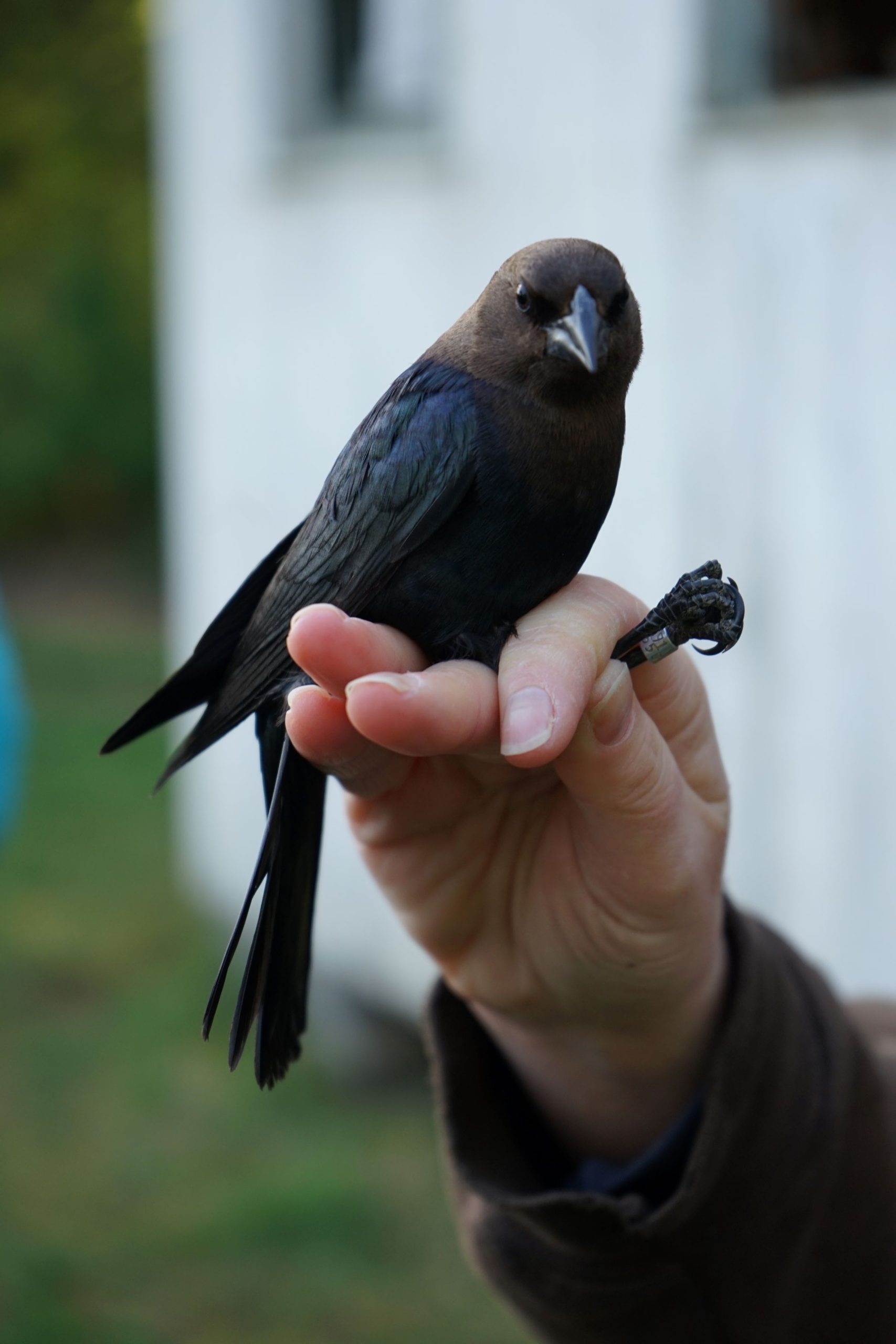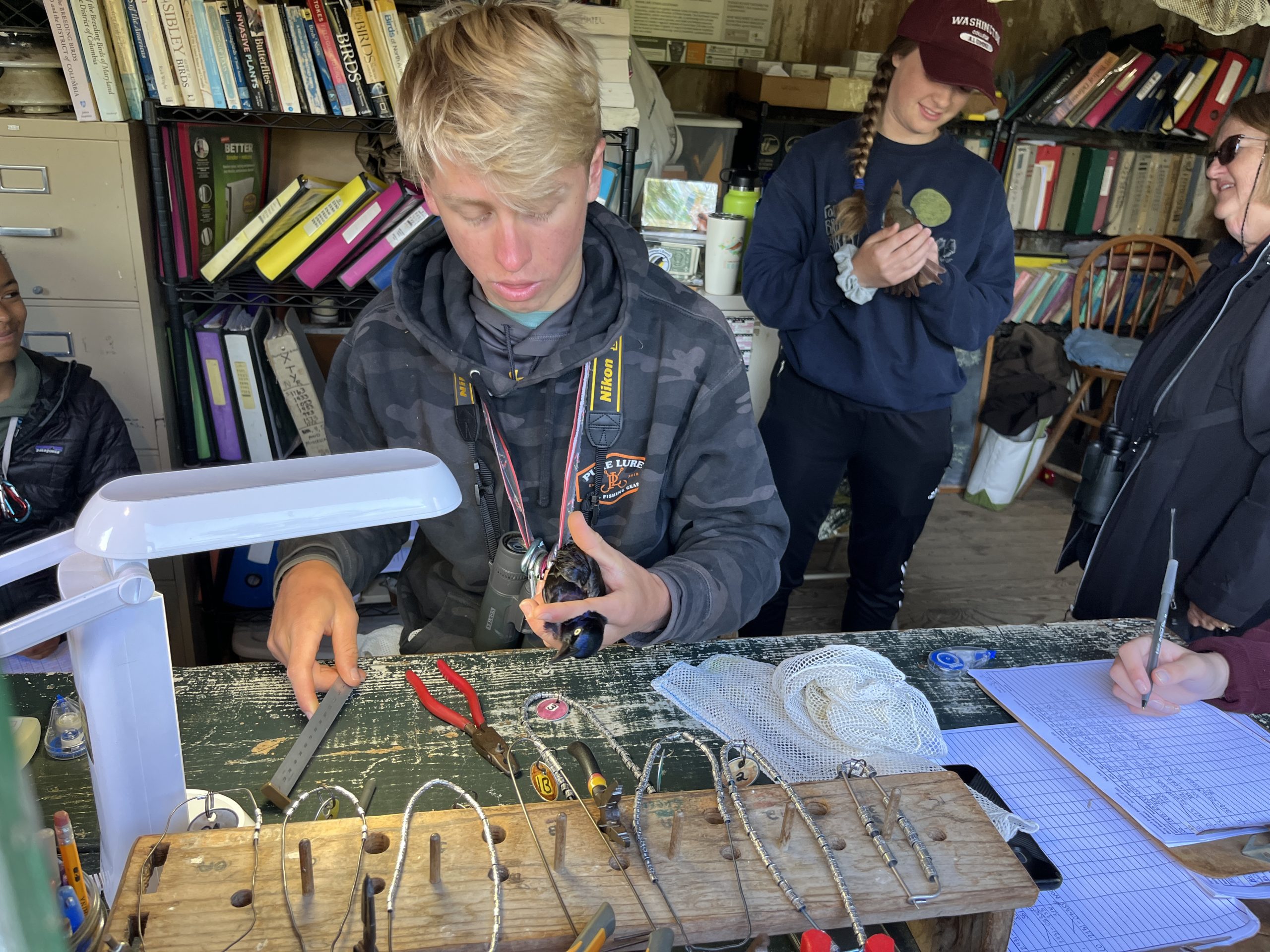Bird Banding at Foreman’s Branch Bird Observatory
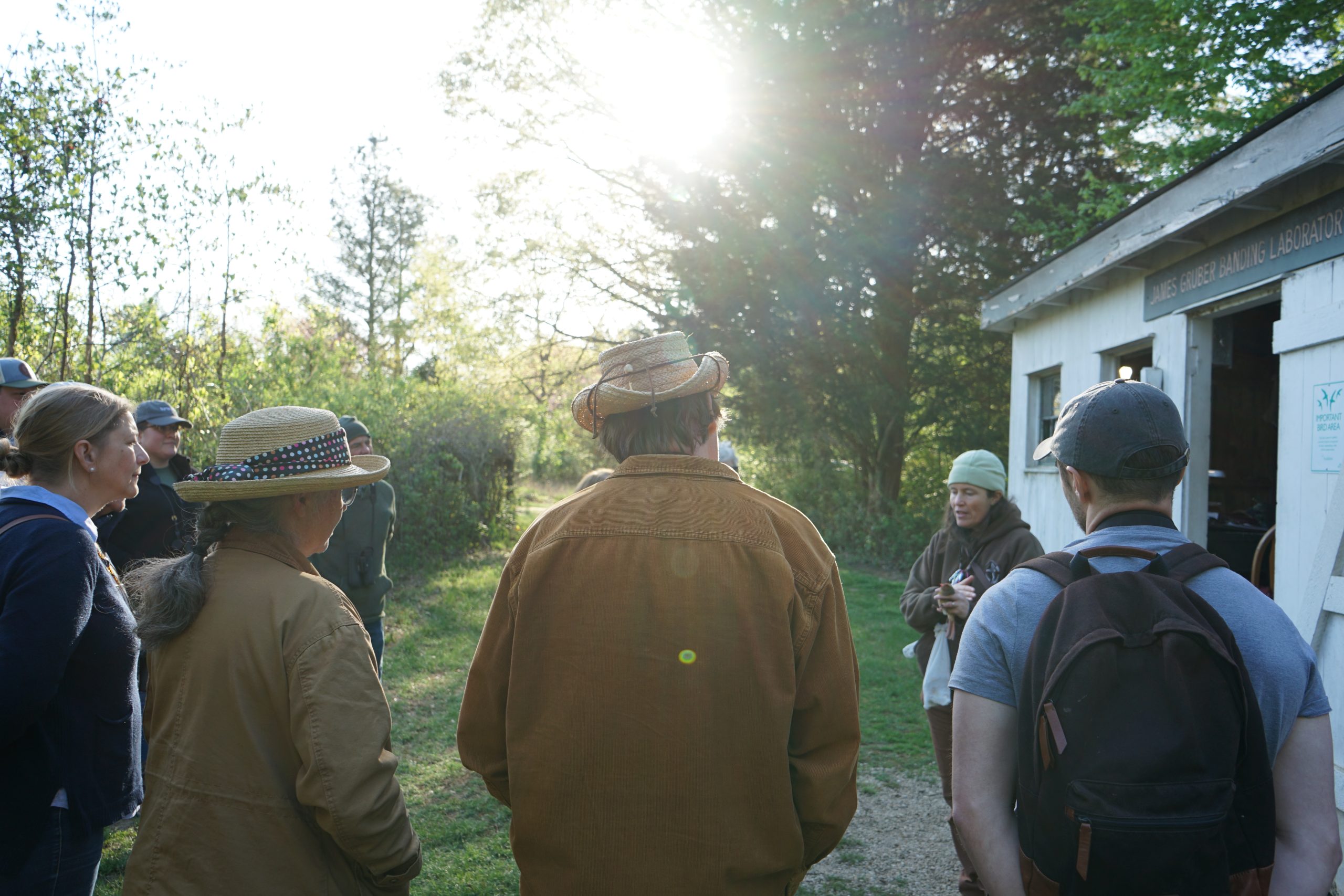
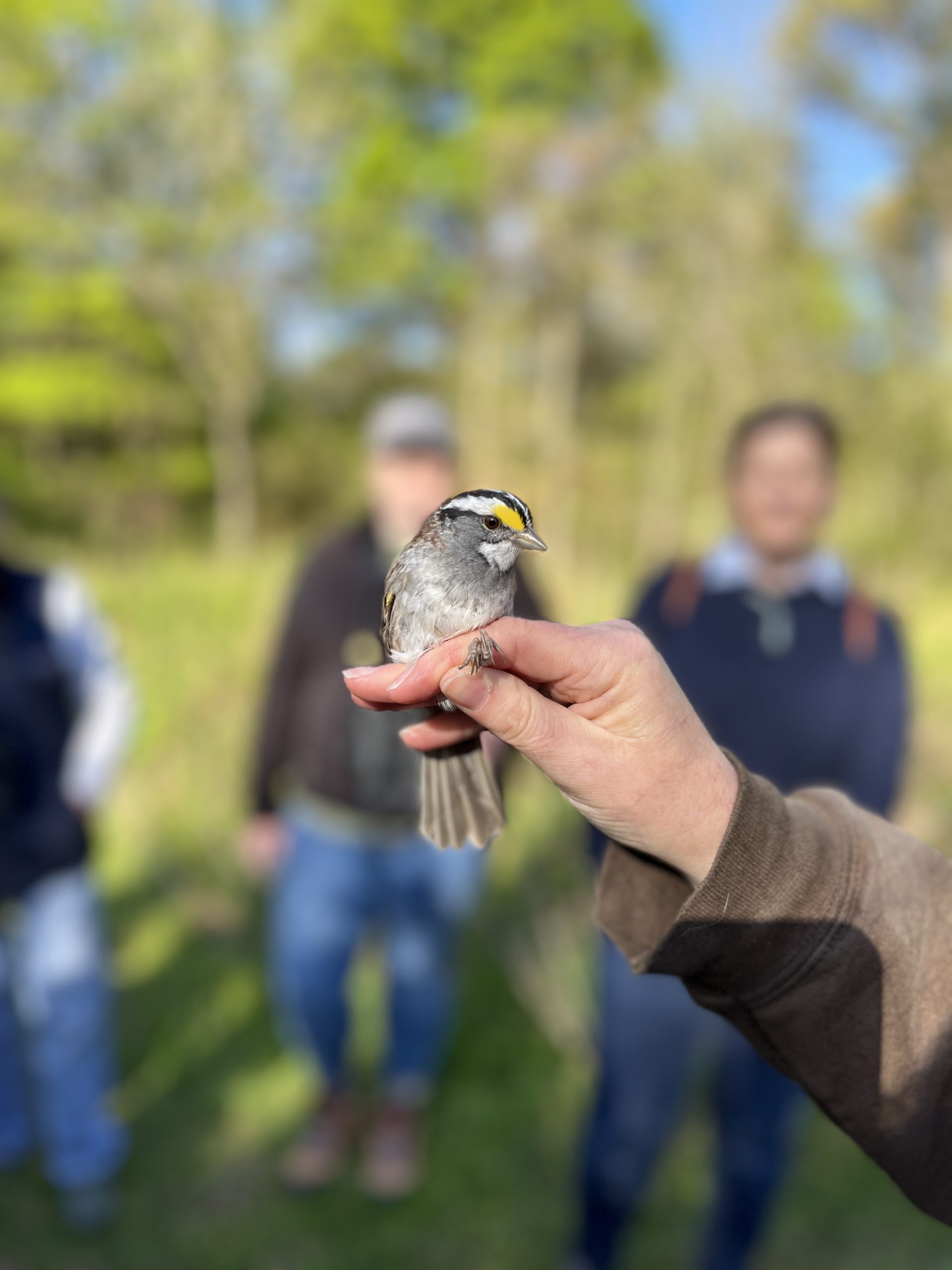
The sun was shining, a spring chill was in the air, and the birds were singing on the morning of Tuesday, April 18th at Foreman’s Branch Bird Observatory on the upper Eastern Shore. Staff and supporters of ESLC gathered to learn from Maren Gimple, field ecologist, and Dr. Jennie Rinehimer, ornithologist and professor of the biology department at Washington College, as migratory bird species passing through the Observatory provided insight on the greater world of bird migration. The Eastern Shore of Maryland is a major stopover site along the Atlantic Flyway, a migratory route that spans from Greenland and Canada to South America and the Caribbean. Here, birds like sandpipers, warblers, bobolinks, and sparrows pause their long journeys to find nourishment and rest.
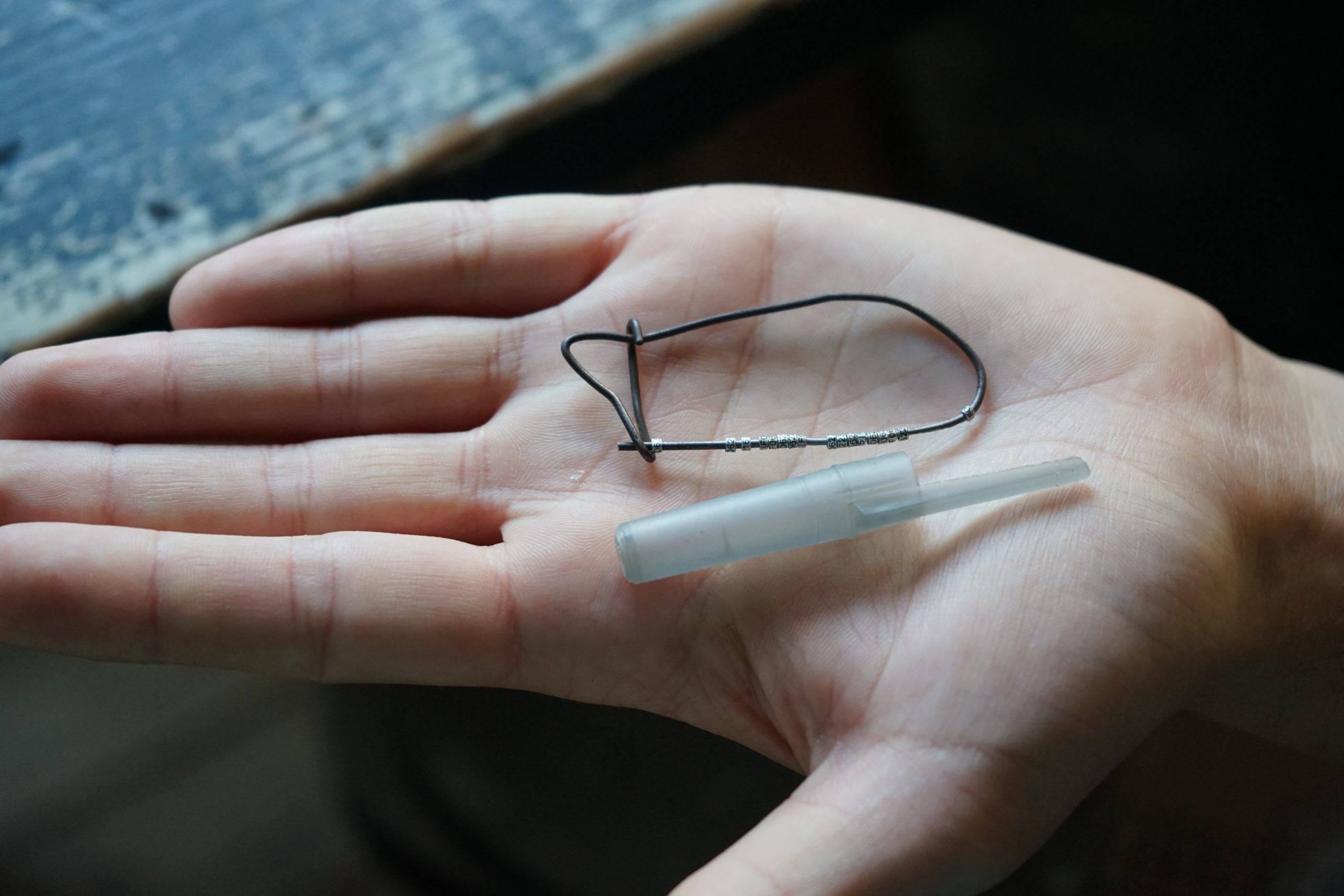
A student at FBBO holds a clip strung with tiny hummingbird bands, each no bigger than a sesame seed (pen cap for scale).
Initiated in 1998, Foreman’s Branch Bird Observatory is part of Washington College’s Center for Environment and Society in Chestertown. Nestled into a section of the River and Field Campus (also known as Chino Farms), the observatory provides migration data critical to a worldwide connected web of avian conservation science. Bird-catching mist nets span across early successional grassland and shrub habitat, mature and successional woods, and river frontage along the namesake Foreman’s Branch, a tributary of the Chester River. Dutiful staff and interns from Washington College collect and record data of these birds from pre-sunrise to 5 hours post-sunrise during the spring and fall migration seasons every year. The birds are dexterously and gently untangled from the fine mist netting and placed in breathable bags to be marched back to the banding station, where quantitative data is collected on the birds’ age, sex, weight, and fat-carrying content. After a brief analysis, the birds are released back into the environment, with no impact to the bird other than, perhaps, a new small metal band around the ankle.
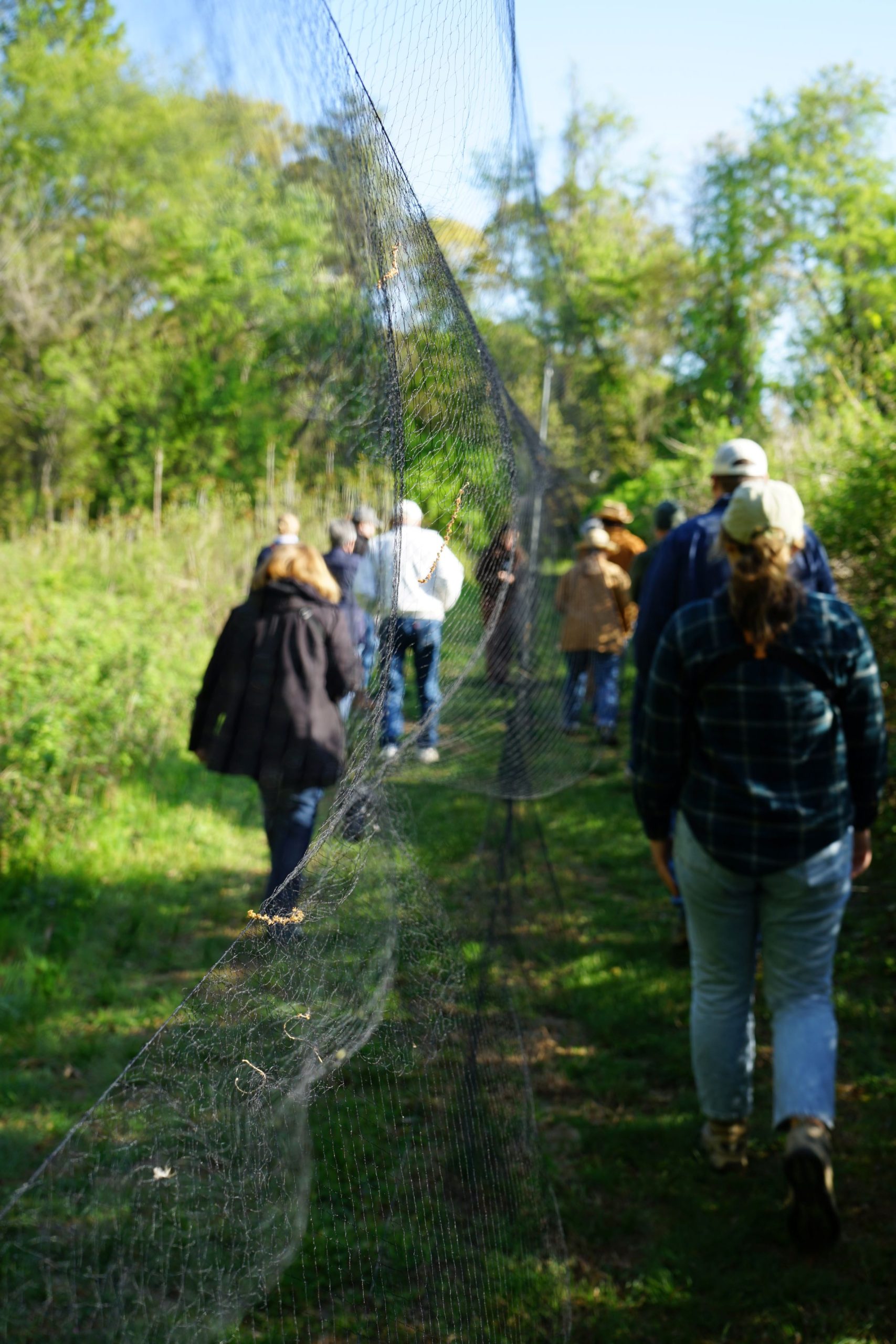
Due to the significance of the Eastern Shore as a refuge for migratory birds, conservation of their habitat is key to ensuring population health. Unfortunately, three billion birds have been lost from North America in the past 50 years—a metric of 1 in 4 breeding birds according to the U.S. Committee of the North American Bird Conservation Initiative. The Bird Conservation Series, initiated in 2022 as a partnership between ESLC and the Lower Shore Land Trust and funded by the Cornell Lab of Ornithology, emphasizes the importance of bird conservation on the Eastern Shore of Maryland and highlights regional efforts, partners, and organizations who are doing the work to conserve our birds.
Our next event in the Bird Conservation Series will take place May 9th at Conquest Preserve, where we will walk, bird, and learn the importance of early successional grassland habitat conservation with field ecologist Daniel Small of Washington College. You can register here: https://www.eslc.org/conquest-preserve/
